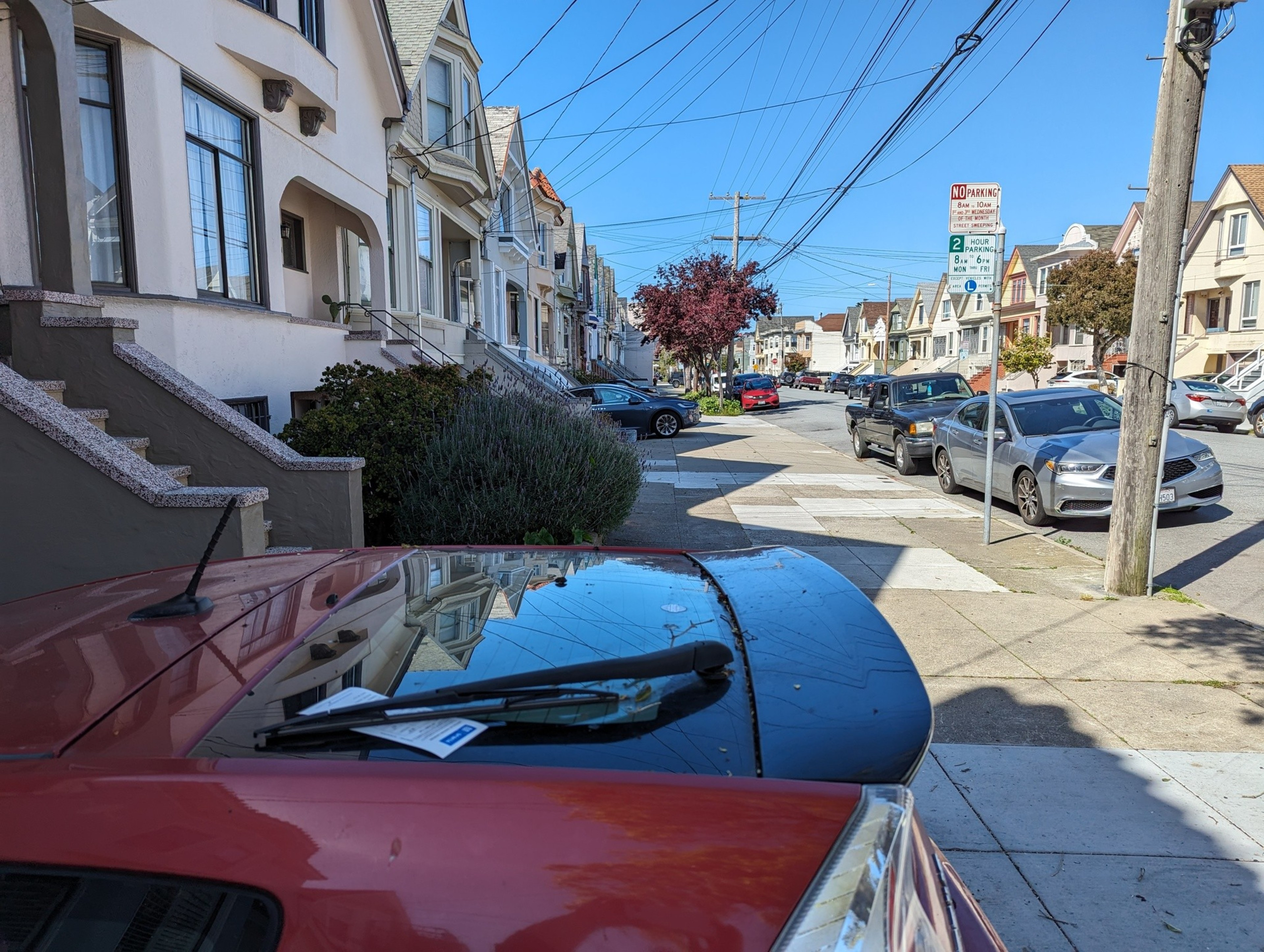Richmond neighborhood resident David Jacoby was shocked Monday to discover that he and his neighbors had received $108 parking citations while their vehicles were sitting in their own driveways.
Their offense, according to the city, was blocking part of the sidewalk.
But Jacoby said that his Prius and the rest of the cars on his Second Avenue block were all parked exactly as they had been for the past decade, never before drawing the ire of parking enforcement.
“It seems a bit random and unwarranted and, frankly, unfair,” Jacoby said.
A few doors down, his neighbor Shari Johnston, also ticketed, was in disbelief that she was hit with a fine on her vehicle.
“It’s in our actual driveway that we pay for,” Johnston said.

In many of San Francisco’s quieter neighborhoods, residents frequently park their vehicles in short driveways, leaving part of their car hanging out onto the sidewalk. But that practice may be about to get costly.
The city has recently filled vacancies on its parking control officer staff, meaning that there are now more eyes on the city’s sidewalks, according to San Francisco Municipal Transportation Agency spokesperson Michael Roccaforte. It’s always been illegal to block the sidewalk, and just because the city hasn’t dinged a driver in the past is no guarantee against a ticket in the future, the SFMTA X account (opens in new tab) pointed out when Jacoby took his complaints to social media.
The flurry of tickets on Second Avenue was likely spurred by either that enhanced enforcement or a tip called in by a member of the public, Roccaforte said.
This type of parking enforcement may be poised to ramp up even more.
Earlier this month, a family of four, including two young children, were killed in a horrific wrong-way crash at a West Portal bus shelter. The incident has put a spotlight on pedestrian safety, and the city’s failure to eliminate traffic deaths through its Vision Zero initiative.

Increasing enforcement of unsafe parking is one piece of Mayor London Breed’s strategy to shore up pedestrian safety, her office said. That’s because people who park on the sidewalk, in bike lanes, or in crosswalks, can force pedestrians into traffic or block people using wheelchairs, according to the Mayor’s Office spokesperson.
“The mayor has directed the SFMTA to conduct dedicated parking control officer enforcement efforts across neighborhoods in each district, prioritizing safety-related violations such as parking on the sidewalks, blocking crosswalks, and parking in day-lit zones,” the spokesperson said.
SFMTA has an online guide for how to park legally in San Francisco (opens in new tab) that directs residents to review the city’s street map for their neighborhood to see exactly how wide their sidewalk is supposed to be. After some research, Jacoby discovered that his portion of Second Avenue calls for the sidewalk to be 15 feet wide, beginning at the curb. While he concedes that his Prius juts a foot or two into that zone, he’s adamant that he should still be allowed to leave his car there.
“I think any reasonable person would see that when we park close, we do not block the sidewalk,” Jacoby said. “Anyone with strollers and a wheelchair or anything big, it’s easy for them to get through.”

But that argument doesn’t cut it, according to local regulations, which say that the city can cite a driver parked on a sidewalk even if the pedestrian path is still partly clear. (The state Vehicle Code Section 22500 (opens in new tab) prohibits drivers from parking with the body of the vehicle extending over a portion of the sidewalk.) As an alternative, residents are allowed to block their own driveways by parking parallel to the curb, so long as their vehicle is registered to the building’s address.
So why not just park in the garage? At Jacoby’s home, the garage is so narrow that he can’t fit his Prius in and out, he said. (He tried once when he moved in and scraped his side mirror.) Instead, he uses the garage for storage. Johnston, on the other hand, already has another car in her garage. But her Subaru Ascent wouldn’t fit in the tight space anyway, she said.
Johnston worries that if the city actually starts enforcing sidewalk encroachment, there simply won’t be enough parking spots to go around. After all, hundreds of her neighbors stuff their vehicles into cramped driveways, and street parking can be tricky.
“It’s going to be completely disruptive to living in this neighborhood,” Johnston said.
After 14 years of parking in her driveway, Johnston is feeling unsure of where to store her car. When The Standard visited on Tuesday afternoon, her Subaru Ascent was parked on the street. For now.
